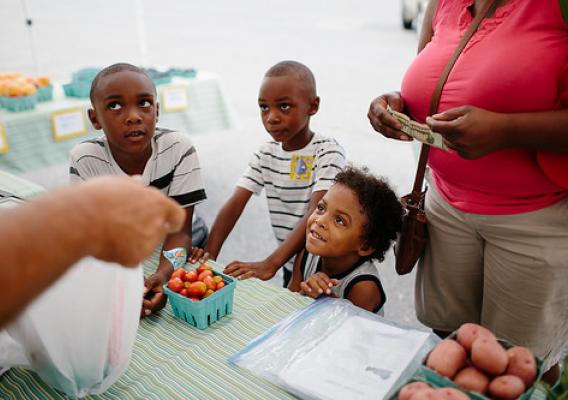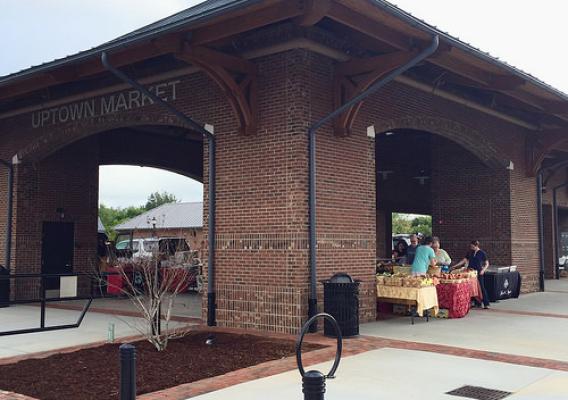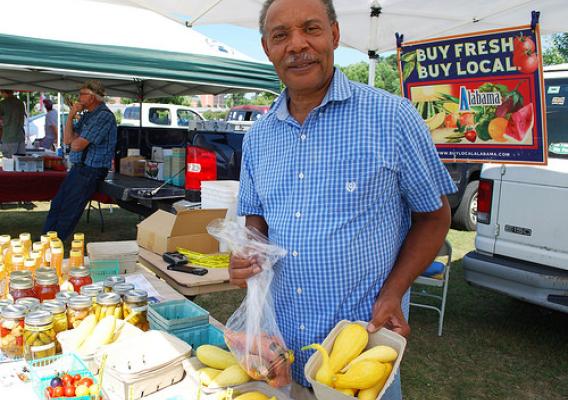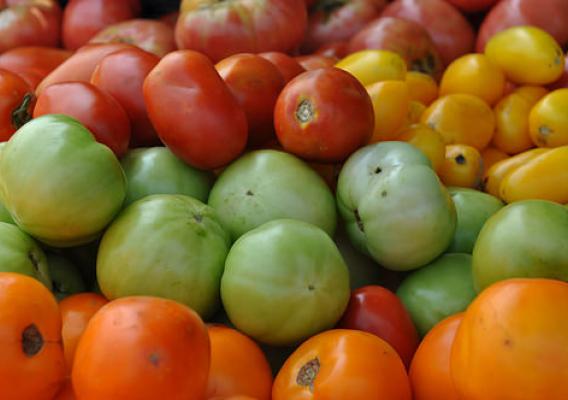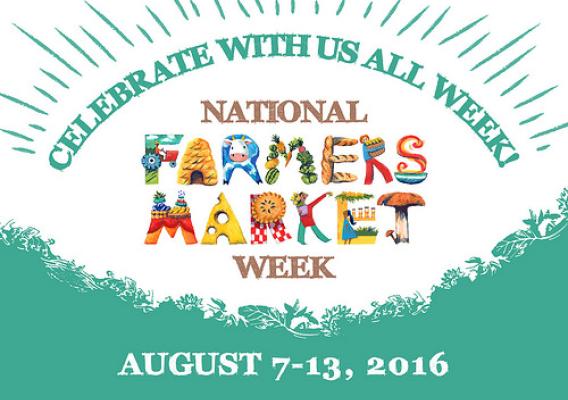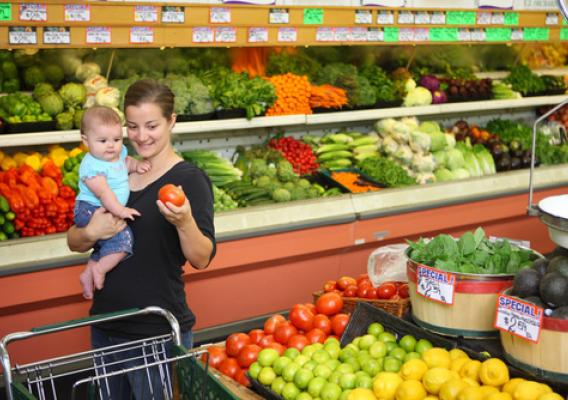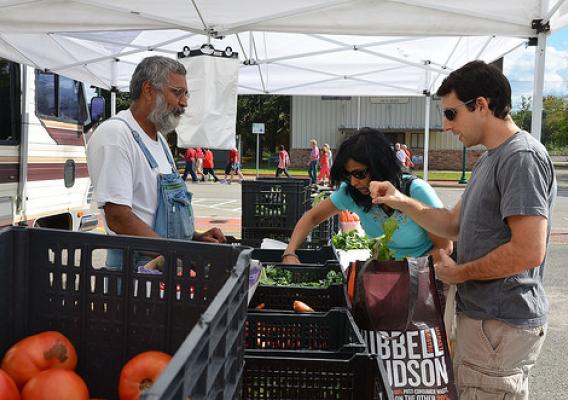Today, we celebrated National Farmers Market Week at Uptown Market in Greenwood, South Carolina, highlighting USDA support for the local food sector in South Carolina and across the country. Uptown Market Manager, Stephanie Turner, and Greenwood Mayor Welborn Adams joined us in thanking the farmers and vendors, and recognizing the great benefits their market has brought to the local community. The Uptown Market is a special place for USDA’s Agricultural Marketing Service (AMS), with a special connection to my program and work we do.
In 2013, AMS Architect, Fidel Delgado, got involved in providing technical assistance for the design and development of the new Uptown Market pavilion. We worked with city officials, businesses leaders and local farmers to understand the community needs for the farmers market. The planned site was originally a railroad station and inspired the design that mimics a train station to fit the historic character of the town. From our visit today, it is clear this market is creating business opportunity and serving as a community resource.


